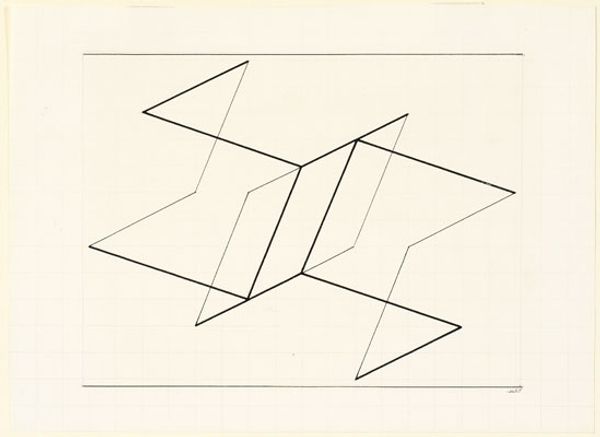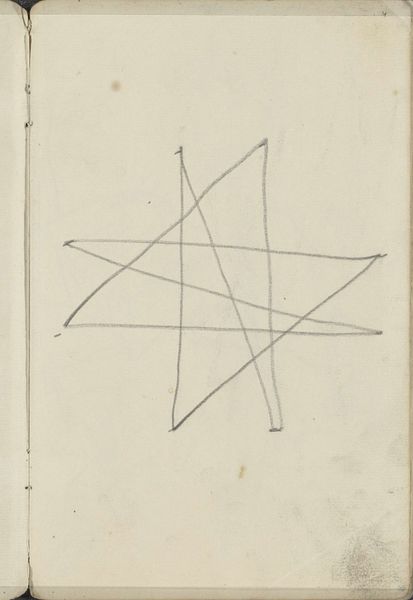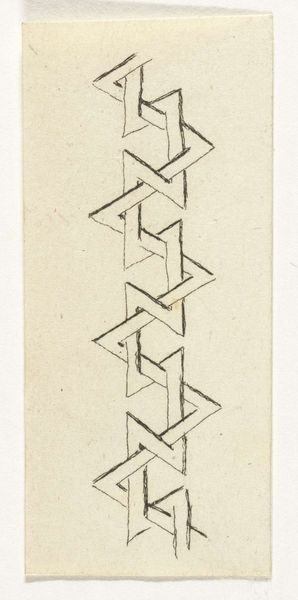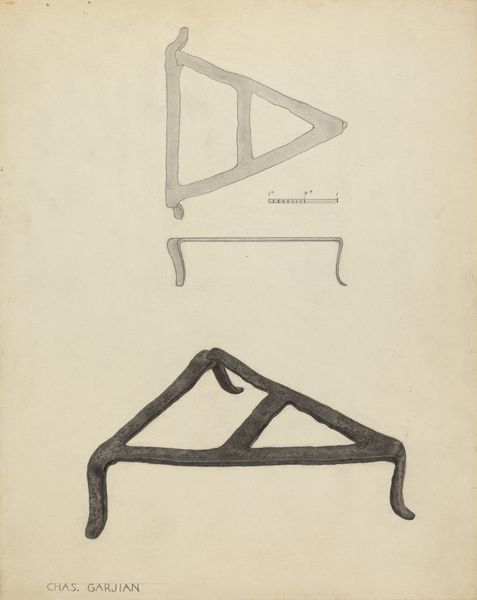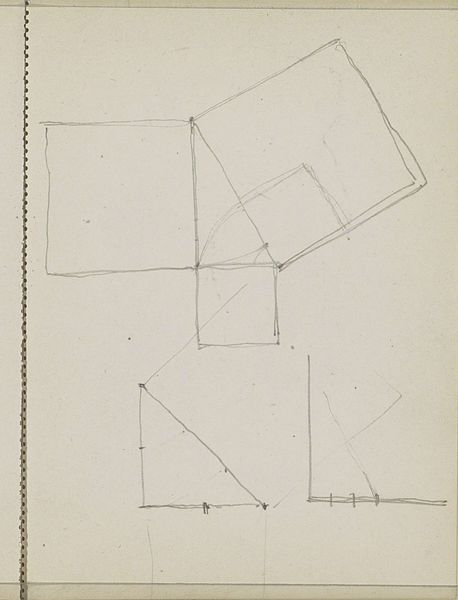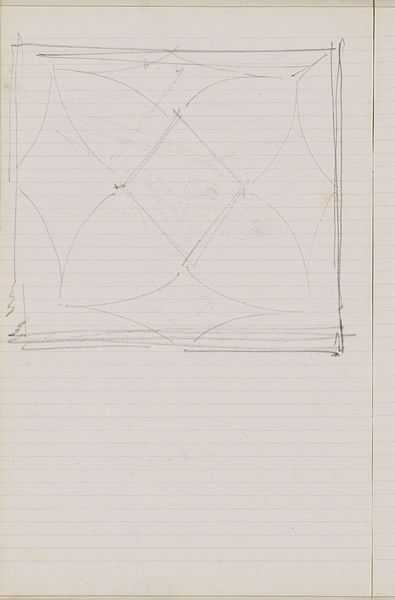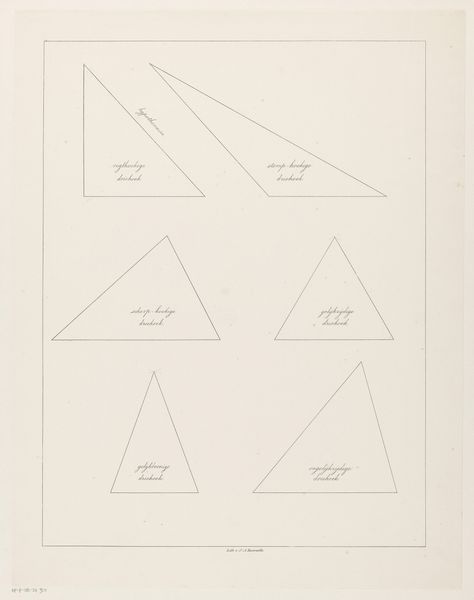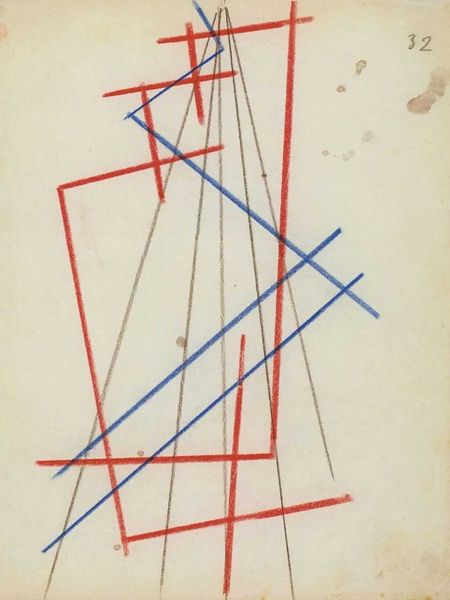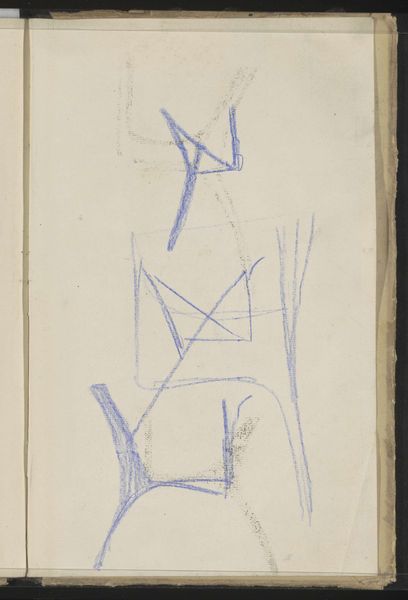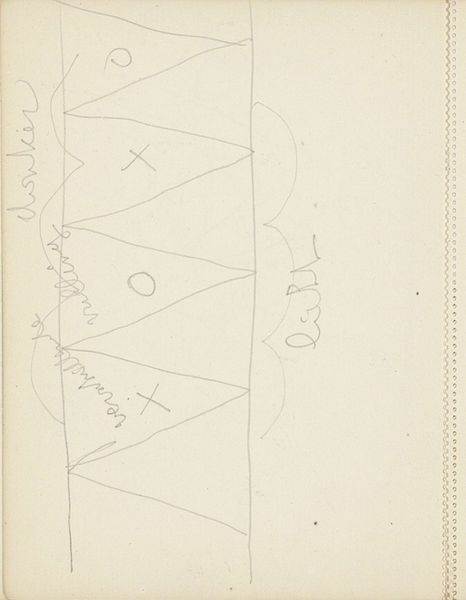
drawing, paper, graphite
#
drawing
#
paper
#
geometric
#
abstraction
#
line
#
graphite
#
experimental typography
#
modernism
Copyright: Helmut Federle,Fair Use
Curator: Helmut Federle’s "Untitled," a drawing from 1982 rendered in graphite on paper, confronts us with the stark beauty of basic forms. Editor: My first impression is one of contemplative calm. The simple geometry feels almost like a meditation, a distillation of form down to its essence. Curator: It is indeed minimalist in its execution, but considering Federle's broader engagement with abstract art in the late 20th century, it's worth examining this piece as more than just shapes. The choice of simple geometric figures invites comparison to constructivist art of the early 20th century, while it may also be interpreted in the social context in which Federle found himself at the time. Editor: I'm interested in the layering of the triangles. There’s an intersectionality hinted at there, right? Do the overlaps symbolize how societal structures intersect, reinforcing or contradicting one another? Or maybe the overlapping implies something entirely different...like the constant revision and change so many of us live with on a day-to-day basis. Curator: It's fascinating to consider the overlapping forms in light of the artist’s engagement with modernism. Modernism had an intrinsic ambition for utopian purity. Are we, with this work, witnessing the shattering or deconstruction of the notion that pure shapes translate directly to an elevated social structure? I wonder, too, about the choice of graphite. Does the gray tonality of the work create a quiet somberness to what may be typically celebratory sharp angles of geometric shapes? Editor: Absolutely, I'm thinking about how this plays into notions of constraint versus potential. Like so many, perhaps the artist wonders what could have been or could be within defined, yet complicated limits. There is something here about resilience, that even when obscured or forced into unfamiliar directions, we must all still move forward. Curator: These interpretations definitely underscore the beauty and complexity present even in the simplest of forms. Thinking about the context of abstract works during the late 20th century certainly shapes our interpretation. Editor: Yes, understanding that intersection of aesthetic intention with personal identity—I'm left thinking how simple lines are transformed into rich expression.
Comments
No comments
Be the first to comment and join the conversation on the ultimate creative platform.
